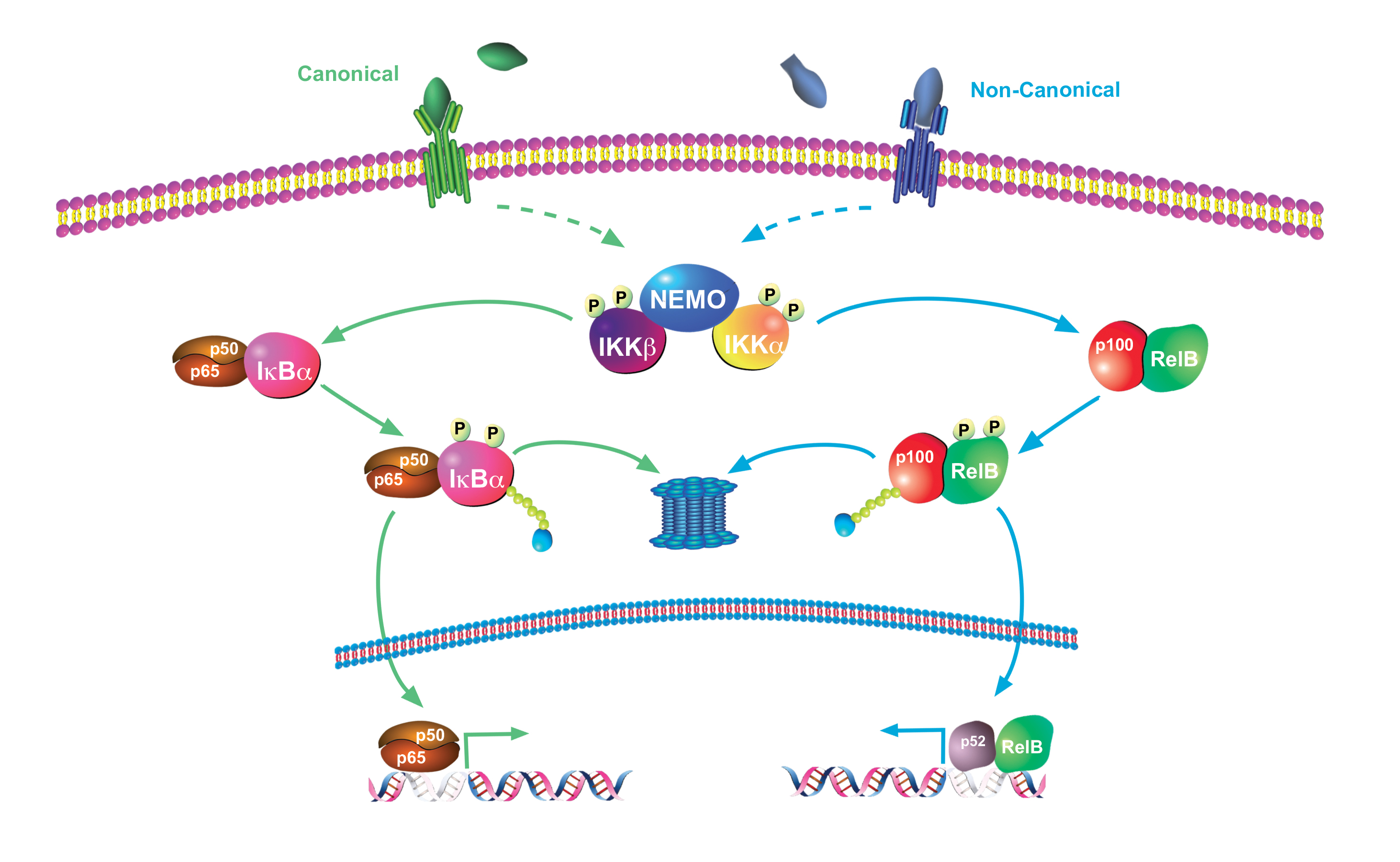TransAM® kits are DNA-binding ELISAs that simplify the study of transcription factor activation in mammalian tissue and cell extracts. Active Motif offers multiple TransAM formats in order to meet your research needs when studying NFkB.
Learn more about the TransAM transcription factor activity assay system
Which TransAM® kit is right for you?
The table below gives a brief overview of the targeted transcription factor(s) and different features of each TransAM Kit format with links to obtain more information.
| Kit Format | Features | Targets |
| Colorimetric | TransAM® NFkB
|
|
| Chemiluminescent | TransAM® NFkB Chemi
|
|
| Flexi Colorimetric | TransAM® Flexi NFkB
|
NFkB Transcription Factor Info
The transcription factor NFkB (NF kappa B, NF-kB, or nuclear factor kB) is widely studied due to its implication in the regulation of genes that control inflammation, cell proliferation and cell survival. NFkB is comprised of homo- or heterodimers of different subunits. These subunits are members of the structurally related Rel family of transcription factors. Five different Rel proteins (also called Rel/NFkB proteins) have been identified: p50 (NF-kB1), p52 (NF-kB2), p65 (RelA), RelB and c-Rel.
p65 (RelA), RelB and c-Rel contain a transactivation domain (TD) in their C-termini, which is required for the transport of active NFkB complexes into the nucleus. In contrast, subunits p50 and p52 do not contain transactivation domains; they are unable to transactivate on their own and must form heterodimers with RelA, RelB or c-Rel. The p50/p65 heterodimers and the p50 homodimers are the most common dimers found in the NFκB signaling pathway.
Inactive NFkB dimers are sequestered in the cytoplasm of cells by the IκB family of inhibitory proteins. Activation of NFkB by external inducers such as lipopolysaccharide, TNF or IL-1, results in the phosphorylation and degradation of the IκB proteins. This releases NFκB dimers, which subsequently translocate to the nucleus where they activate appropriate target genes.
For additional information on transcription factor NFkB, please click here.


